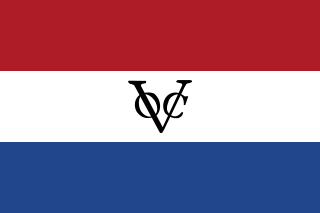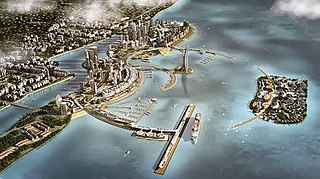The Chitty, also known as the Chetty or Chetti Melaka, are an ethnic group whose members are of primarily Tamil descent, found mainly and initially in Melaka, Malaysia, where they settled around the 16th century, and in Singapore where they migrated to in the 18th and 19th centuries from Melaka. Also known colloquially as "Indian Peranakans", the culture of the Chitty has drawn significant influence from the Nusantara region and to a small extent the Chinese, whilst also retaining their Hindu faith and heritage. In the 21st century, their population stands at 2,000. The Chitty/Chetti community are different from Chettiar, bankers brought from Tamil Nadu to British Malaya. They are practising Hindus.

Malacca City is the capital city of the Malaysian state of Malacca, in Melaka Tengah District. It is the oldest Malaysian city on the Straits of Malacca, having become a successful entrepôt in the era of the Malacca Sultanate. The present-day city was founded by Parameswara, a Sumatran prince who escaped to the Malay Peninsula when Srivijaya fell to the Majapahit. Following the establishment of the Malacca Sultanate, the city drew the attention of traders from the Middle East, South Asia, and East Asia, as well as the Portuguese, who intended to dominate the trade route in Asia. After Malacca was conquered by Portugal, the city became an area of conflict when the sultanates of Aceh and Johor attempted to take control from the Portuguese.

Jasin District is one of the three administrative district in Malacca, Malaysia. It borders Tangkak District of Johor to the east, Tampin District of Negeri Sembilan to the north and Alor Gajah District and Melaka Tengah District to the west. The district capital is Jasin Town.

Tanjung Tuan is an area in Alor Gajah District, Malacca, Malaysia. It is a semi-exclave of Malacca adjacent to Port Dickson, Negeri Sembilan.

A Famosa was a Portuguese fortress built in Malacca, Malaysia, circa 1512. The oldest part of the fortress was a five-storey keep which eventually gave its name to the fortress as a whole. Some time following the Battle of Malacca (1641) and the occupation of the city by the Dutch, the keep was destroyed but the outer walls of the fortress were expanded. However, in 1811 the British destroyed all of the original fortress and most of the outer walls. The Porta de Santiago gateway, and the rebuilt Middelburg Bastion, are the only parts of the fortress that remain today.

The Archdiocese of Singapore is an exempt archdiocese of the Latin Church of the Catholic Church. Its territory includes all that is under the jurisdiction of the Republic of Singapore.

The Battle of Cape Rachado, off Cape Rachado in 1606, was an important naval engagement between the Dutch East India Company (VOC) and Portuguese Navy.

Dutch Malacca (1641–1825) was the longest period that Malacca was under foreign control. The Dutch ruled for almost 183 years with intermittent British occupation during the French Revolutionary and later the Napoleonic Wars (1795–1815). This era saw relative peace with little serious interruption from the Malay sultanates due to the understanding forged between the Dutch and the Sultanate of Johor in 1606. This period also marked the decline of Malacca's importance. The Dutch preferred Batavia as their economic and administrative centre in the region and their hold in Malacca was to prevent the loss of the city to other European powers and, subsequently, the competition that would come with it. Thus, in the 17th century, with Malacca ceasing to be an important port, the Johor Sultanate became the dominant local power in the region due to the opening of its ports and the alliance with the Dutch.

Melaka Sentral is the largest public transportation terminal in Malacca, Malaysia. It occupies 46.6 hectares of land and located between Lebuh AMJ and Jalan Panglima Awang and was opened on 14 May 2004. The construction of the bus terminal costed RM610,000 and begun in February 2003 and completed in the following year. It was constructed with high roofs which allows sunlight to reach the inside of the terminal building and based on the design of Kuala Lumpur International Airport (KLIA). The bus terminal is linked to Lotus's Peringgit and Seri Cempaka retail area by an octobus linkbridge.

The Stadthuys is a historical structure situated in the heart of Malacca City, the administrative capital of the state of Malacca, Malaysia, in a place known as the Red Square. The Stadthuys is known for its red exterior and nearby red clocktower. It was built by the Dutch in 1650 as the office of the Dutch governor and deputy governor. It continued to be used as the Treasury, Post Office, Government Offices, and suites of apartments for the high officials after the takeover by the British.

Indo people are a Eurasian people of mixed Asian and European descent. Through the 16th-18th centuries, they were known by the name Mestiço. To this day, they form one of the largest Eurasian communities in the world. The early beginning of this community started with the arrival of Portuguese traders in South East Asia in the 16th century. The second large wave started with the arrival of the Dutch East India Company (VOC) employees in the 17th century and throughout the 18th century. Even though the VOC is often considered a state within a state, formal colonisation by the Dutch only commenced in the 19th century.
The Presbyterian Church in Malaysia or GPM is a Christian church in Malaysia. Established as an independent synod in 1974, it currently has approximately 7,000 members in 100 congregations nationwide.

Saint Paul's Church is a historic church building in Malacca City, Malaysia, that was originally built from 1566 to 1590. It is the oldest European building east of India. It is located on the summit of St. Paul's Hill.

Malacca, officially the Historic State of Malacca, is a state in Malaysia located in the southern region of the Malay Peninsula, facing the Strait of Malacca. The state is bordered by Negeri Sembilan to the north and west and Johor to the south. The exclave of Tanjung Tuan also borders Negeri Sembilan to the north. Its capital is Malacca City, which has been listed as a UNESCO World Heritage Site since 7 July 2008.

Melaka Gateway is an off-shore development of artificial islands in Malacca, Malaysia. It was launched on 7 February 2014 by Malaysia's Prime Minister, Dato' Seri Najib Bin Tun Abdul Razak, witnessed by Malacca Chief Minister Idris Haron. It was expected to be open in 2018 and finished completely by 2025. The project was planned to consist of four artificial islands including Melaka Island and one adjacent natural island – Panjang Island, with mixed residential and commercial development, leisure-cum-tourism amenities, free-trade zone, port and industrial zone. However, a series of obstacles led to the project scaled down to only Melaka Island alone with a cruise terminal.

The Malaysia Youth Museum is a museum in Malacca City, Malacca, Malaysia, which dedicated to the youth of Malaysia and their contribution to the economic and social wellbeing at regional, national, and international levels.

St. Paul's Hill is a hill in Malacca City, Malacca, Malaysia. It was originally known as Malacca Hill during the Sultanate period and Mary's Hill during the Portuguese period.

The Middelburg Bastion was one of nine bastions of A Famosa, in Malacca City, Malacca, Malaysia located at the mouth of Malacca River. The bastion has been restored, together with cannons, and is open for visitors. The Dutch name is in reference to the city of Middelburg, Zeeland.
Sadayandy Batumalai is a Malaysian Christian theologian.



















